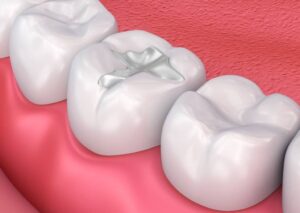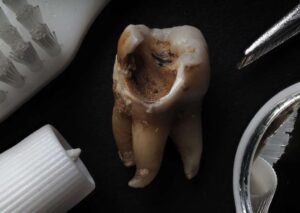Most dental fillings need to be replaced every 5 to 15 years, depending on the material used, daily habits, and how well they were placed. Composite resin fillings typically last 5 to 7 years, while materials like gold can endure up to 30 years with proper care.
At our dental clinic in Kepong, we’ve seen many patients delay filling replacements without realising the hidden risks – from cracks and decay to further tooth damage. Understanding when and why a filling should be replaced is the key to maintaining a healthy, pain-free smile.
How Long Do Dental Fillings Last On Average?
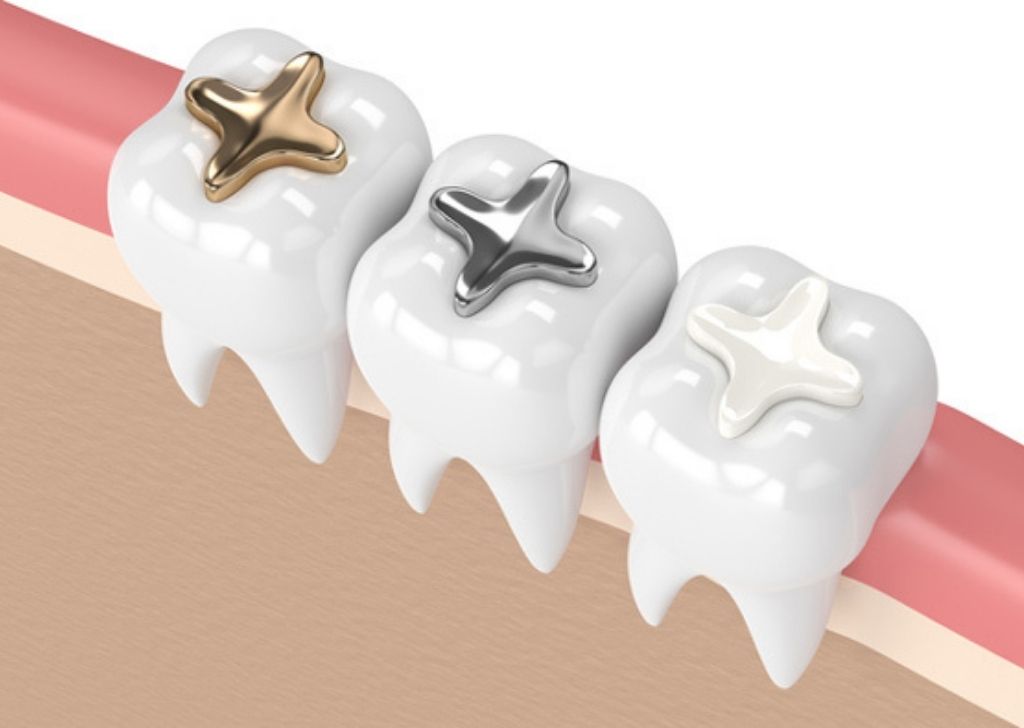
Dental fillings aren’t designed to last forever. Their lifespan depends on the filling material, the location of the filling, and your oral care habits. On average:
- Composite resin fillings last about 5 to 7 years.
- Silver amalgam fillings may hold up for 10 to 15 years.
- Ceramic and gold fillings can often last 15 to 30 years.
- Glass ionomer fillings, commonly used for temporary or baby teeth, may last 5 years or less.
Let’s explore how each material performs over time and why choosing the right one matters not only for longevity but also for your oral health.
Composite Resin Fillings (5 – 7 years)
These are the most common and visually appealing option, especially for aesthetic dental fillings in front teeth. While they blend naturally with your tooth color, they’re also more prone to wear and staining compared to metal-based options.
Because of their limited durability, composite fillings often require replacement within 5 to 7 years, particularly for patients who grind their teeth or consume a lot of staining foods or beverages.
Silver Amalgam Fillings (10 – 15 years)
Silver amalgam has been around for over a century and is known for its durability. However, amalgam dental fillings side effects and concerns about mercury tooth fillings removal have led many to opt for alternatives.
While these fillings can last a decade or more, they tend to expand and contract with temperature changes, which may cause microfractures in the surrounding tooth over time. If you’re considering replacing silver fillings with white, our clinic provides modern alternatives that are safer and more aesthetic.
Ceramic Fillings (15+ years)
Ceramic (often porcelain) fillings are more resistant to staining than composite resin and can last over 15 years if properly maintained. They’re an excellent choice for patients looking for long-lasting, natural-looking results in visible areas.
However, their cost is generally higher, and proper placement is critical to avoid early wear. At our Kepong dental clinic, we guide patients on selecting ceramic fillings based on both cosmetic goals and functional needs.
Glass Ionomer Fillings (5 years or less)
This material releases fluoride and is typically used for non-load-bearing teeth or temporary fillings. Though useful in specific cases, their lifespan is short – often around 5 years or less. They’re more vulnerable to wear and not suitable for large cavities or molars.
Gold Fillings (15 – 30 years)
Gold fillings are among the most durable and can last up to 30 years or longer. While not commonly chosen today due to cost and appearance, they’re still highly effective for those seeking maximum longevity.
What Usually Affects the Lifespan of a Tooth Filling?
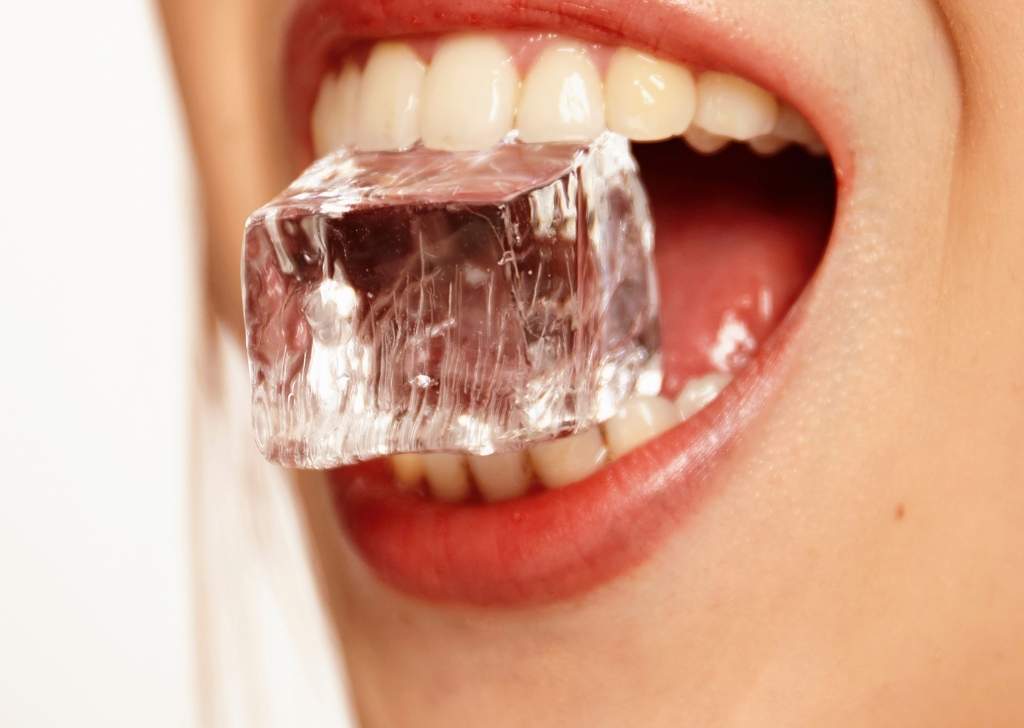
Even the strongest dental materials won’t last forever if the surrounding conditions aren’t ideal. Several key factors influence how long your filling holds up before needing a replacement. Understanding these variables helps you take proactive steps to extend your filling’s life — and avoid unnecessary costs down the line.
Type of Material Used
Different materials wear down at different rates. Composite resin tends to break down faster than gold or ceramic, especially in back teeth where chewing force is strongest. Amalgam fillings, while long-lasting, come with concerns about mercury content and aesthetics. If you’re looking into mercury tooth fillings removal, it’s crucial to choose a replacement material that suits your lifestyle and bite pressure.
Location of the Filling
Fillings in molars and premolars endure more stress from chewing and grinding, making them more prone to fractures and wear. Front teeth fillings often last longer simply because they don’t deal with the same amount of pressure. However, front tooth fillings also need to maintain a natural appearance, so aesthetic dental fillings like resin or ceramic are usually preferred despite their shorter lifespan.
Your Daily Oral Habits
If you grind your teeth (bruxism), chew ice, bite fingernails, or use your teeth to open things, you’re unknowingly shortening your filling’s life. These habits introduce extra force that can cause microcracks or outright break the restoration. A custom mouthguard may help protect your teeth if you grind at night.
Oral Hygiene and Diet
Poor brushing and flossing allow bacteria to sneak in along the edges of the filling, leading to decay underneath. A sugar-heavy or acidic diet also speeds up the degradation of both natural enamel and the filling material. Regular cleanings and exams at your trusted dental clinic can help detect issues before they escalate.
Dentist Skill and Technique
Not all dental work is created equal. A poorly shaped or overfilled restoration may trap food, interfere with your bite, or wear unevenly. At Fresh Dental Care, our fillings are precisely crafted for long-term function and natural aesthetics, using modern materials and digital imaging to get the fit right the first time.
5 Signs Your Dental Filling Needs to Be Replaced
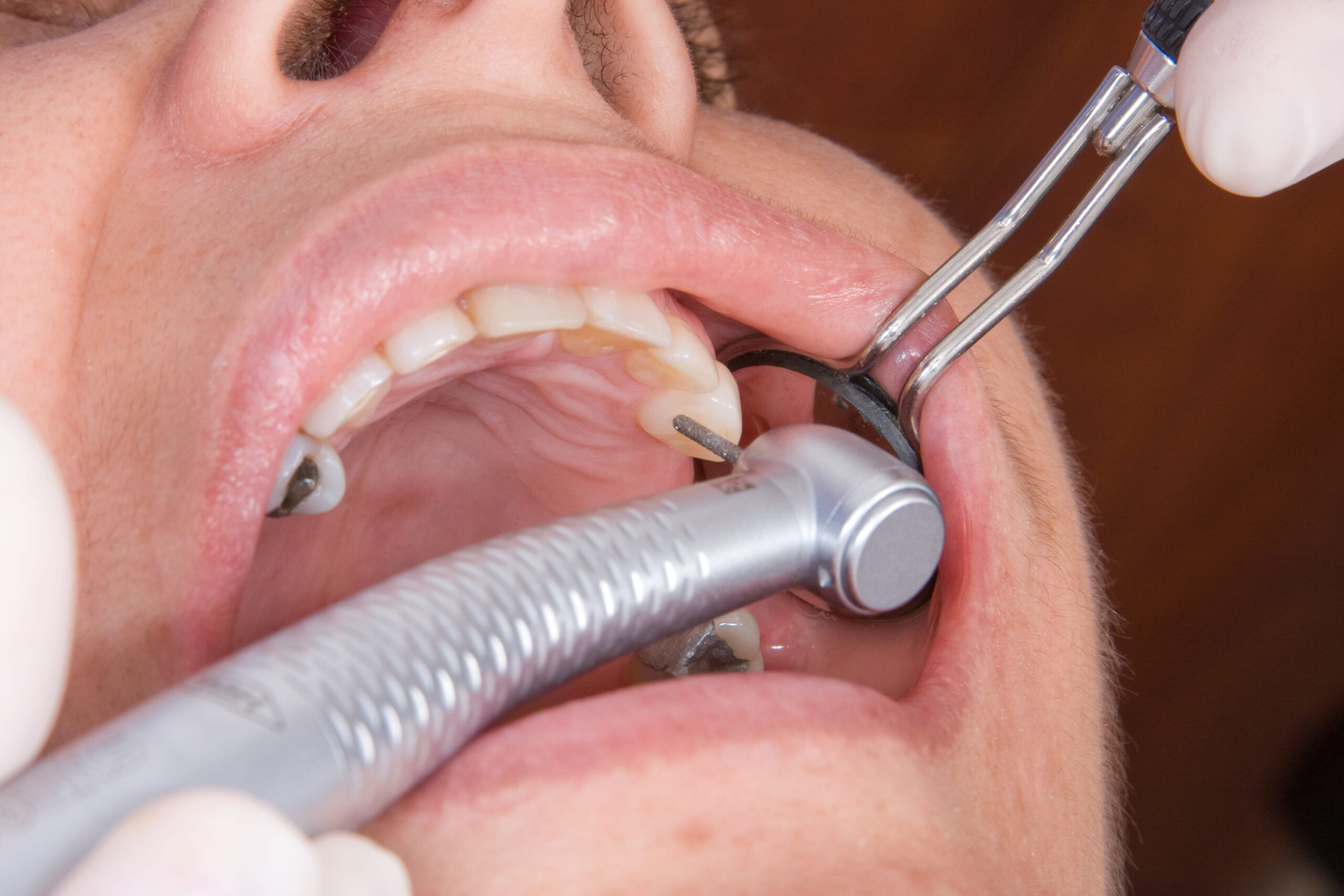
Even if your filling feels fine, it might be silently breaking down. Recognising early red flags can help prevent larger issues like root canals or full crowns. Below are five common warning signs that your dental filling is wearing out.
Tooth Pain or Sensitivity
Pain when chewing or sudden sensitivity to hot, cold, or sweet foods may mean your filling no longer seals the tooth properly. Over time, fillings can shrink, crack, or pull away slightly, creating tiny openings that let bacteria in. If the tooth starts to hurt or react to temperature changes, it’s time to schedule a check-up.
Visible Cracks or Wear
A filling endures pressure from chewing daily, especially on back teeth. Composite fillings can chip, while amalgam may develop hairline fractures. These visible defects allow bacteria to sneak underneath and compromise the tooth’s structure. If you spot any cracks or notice that your filling feels worn down, it’s not something to ignore.
Discoloration Around the Filling
Dark stains or a shadowy appearance around the edges of your filling might signal decay beneath the surface. While silver fillings naturally look darker, new discoloration is a red flag. If you’re considering replacing silver fillings with white for a cleaner, aesthetic look, this might be the perfect time.
Rough or Uneven Texture
If your tongue keeps catching on a jagged edge or the filled tooth suddenly feels different when you bite, that filling could be deteriorating. A once-smooth surface that turns rough, grainy, or uneven indicates wear or possible damage that needs fixing.
You’ve Had the Filling for 10+ Years
Even if you’re not seeing symptoms, old fillings are ticking time bombs. Materials wear out with age, and gaps may form at the margins. If it’s been over a decade since you last had the filling checked – especially if it’s an amalgam dental filling – book an appointment with your dental clinic in Kepong to evaluate whether it’s time for a replacement.
Is It Possible To Replace a Dental Filling Multiple Times?

Yes, dental fillings can be replaced more than once — but there are limitations. Every time a filling is redone, a small amount of healthy tooth structure is removed. Over time, this can compromise the strength of the tooth, especially if multiple large fillings are involved. Here’s what determines how often a filling can be replaced.
Size of the Filling
The larger the filling, the less natural tooth is left to support future repairs. Replacing small or medium fillings is generally straightforward. But for oversized restorations that cover a big portion of the tooth, your dentist may recommend a dental crown instead. A crown offers longer durability and better structural support.
Tooth Health
If decay has returned under the filling or if the surrounding tooth enamel is weakened, replacing the filling may not be the best solution. In such cases, the tooth may require more complex treatment like root canal therapy or even extraction if the damage is extensive.
Filling Material
Different filling materials respond differently to wear and tear. For instance, mercury tooth fillings removal may be necessary not just for health concerns, but also because amalgam can expand and contract with temperature changes, weakening the tooth over time. Modern materials like aesthetic dental fillings made from resin or ceramic are easier to replace and bond better with natural enamel.
Patient Habits
Habits like nail-biting, chewing on ice, or grinding teeth at night put extra strain on dental fillings. If these behaviors continue, you may find yourself replacing your fillings more frequently than expected. In such cases, a custom mouthguard or lifestyle changes can help extend the life of future restorations.
Can I Make My Dental Filling Last Longer?

While every filling has a limited lifespan, how long it lasts can be significantly influenced by your daily habits and oral care routine. If you’re getting your tooth fillings, here’s what you can do to keep them in top shape for as long as possible.
Brush and Floss Daily
Consistent brushing and flossing remove plaque and food particles that could compromise the integrity of your fillings. Use a soft-bristled toothbrush and fluoride toothpaste to keep your natural teeth and restoration materials clean. Flossing prevents decay from forming around the edges of the filling — a common place for breakdown to start.
Avoid Hard and Sticky Foods
Chewing on hard foods like ice, nuts, or candies can crack your fillings. Sticky foods like toffee or caramel may loosen them over time. It’s not just about what you eat — it’s how often and how aggressively you chew.
Use a Mouthguard If You Grind Your Teeth
Bruxism (teeth grinding) puts enormous pressure on fillings, leading to fractures or early wear. Wearing a night guard can protect your aesthetic dental fillings and also prevent jaw pain or enamel erosion.
See Your Dentist Twice a Year
Routine dental visits allow your dentist to monitor the condition of your fillings. They can catch issues early — like microleaks or discoloration — and recommend preventive action before the problem worsens. At Fresh Dental Care Kepong, we provide regular check-ups to help you maintain both your natural and restored teeth.
Cut Back on Sugar and Acidic Drinks
Sugar feeds the bacteria that cause cavities, and acidic drinks like sodas or citrus juices can erode the margins of your fillings. Rinse your mouth with water after consuming these, or use a straw to minimise contact.
Choose a Filling Material That Fits Your Lifestyle
Not all filling materials are equal. If you’re considering replacing silver fillings with white, resin composites offer a more aesthetic option but require more care. On the other hand, ceramic or gold fillings are more durable for heavy chewers. Let your dentist know your lifestyle habits so they can recommend the best fit.
Frequently Asked Questions
Is it painful to do tooth fillings?
Getting a tooth filling is usually not painful. Dentists commonly use local anaesthesia to numb the area before treatment, so you shouldn’t feel sharp pain during the procedure. You may feel mild pressure or vibration from the dental drill, but it’s generally tolerable. After the filling, some patients experience temporary sensitivity to hot, cold, or pressure – this usually improves within a few days. If discomfort lasts longer, it’s best to return to your dentist for a check-up.
How many times can a dental filling be replaced?
In most cases, a filling can be replaced multiple times. However, every replacement removes a small portion of the natural tooth structure. Over time, this may compromise the tooth’s integrity. If a tooth becomes too weak, you may need a dental crown instead. The number of replacements also depends on the filling material used and how well the tooth has been maintained.
Is it safe to remove old amalgam fillings?
Yes, but it must be done properly. Improper removal of mercury tooth fillings can release toxic particles. Clinics trained in how to safely remove amalgam fillings use rubber dams and high-volume suction to minimise exposure. If you’re considering replacing silver fillings with white, choose a clinic that follows proper safety protocols like Fresh Dental’s tooth filling service in Kepong.
Are there any side effects of amalgam dental fillings?
Some patients report allergic reactions or metal sensitivity. There is ongoing debate about amalgam dental fillings side effects, especially due to their mercury content. While health authorities deem them safe for most people, those with health concerns or allergies often opt for aesthetic dental fillings like resin or ceramic as a safer alternative.
Can I leave a filling that’s slightly worn?
You could, but it’s risky. Even small gaps or wear in a filling can let bacteria in, leading to decay underneath. Once decay progresses, it might require a root canal or even extraction. It’s always better to repair or replace earlier than too late.
Book a Consultation With Fresh Dental Care Kepong
At Fresh Dental Care Kepong, we take pride in offering safe, long-lasting, and aesthetic dental fillings tailored to your individual needs. Whether you’re experiencing discomfort or simply unsure when your last filling was replaced, our team is ready to help.
From aesthetic dental fillings to mercury filling removal, our dentists use modern materials and techniques to ensure safe, effective, and lasting results. We also follow strict safety protocols while ensuring a smooth and health-conscious transition for your smile.
Visit our tooth filling page to learn more, or message us directly on WhatsApp to schedule your consultation.



